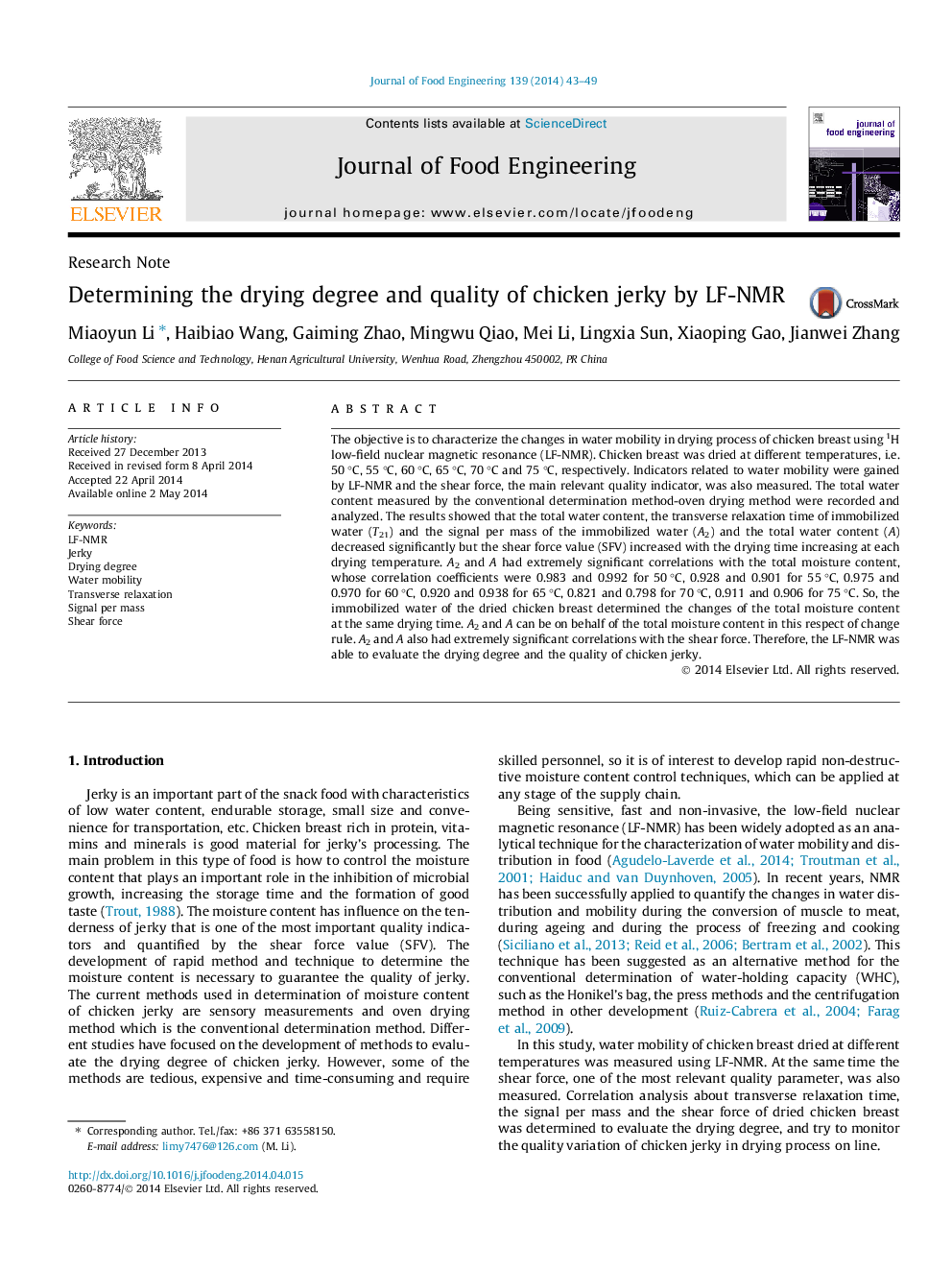| Article ID | Journal | Published Year | Pages | File Type |
|---|---|---|---|---|
| 223067 | Journal of Food Engineering | 2014 | 7 Pages |
•The rule of water mobility of chicken breast dried at different temperatures was obtained.•The LF-NMR was able to discriminate the drying degree of chicken jerky by specific indicators.•Correlations were found between the LF-NMR parameters and quality indicators.
The objective is to characterize the changes in water mobility in drying process of chicken breast using 1H low-field nuclear magnetic resonance (LF-NMR). Chicken breast was dried at different temperatures, i.e. 50 °C, 55 °C, 60 °C, 65 °C, 70 °C and 75 °C, respectively. Indicators related to water mobility were gained by LF-NMR and the shear force, the main relevant quality indicator, was also measured. The total water content measured by the conventional determination method-oven drying method were recorded and analyzed. The results showed that the total water content, the transverse relaxation time of immobilized water (T21) and the signal per mass of the immobilized water (A2) and the total water content (A) decreased significantly but the shear force value (SFV) increased with the drying time increasing at each drying temperature. A2 and A had extremely significant correlations with the total moisture content, whose correlation coefficients were 0.983 and 0.992 for 50 °C, 0.928 and 0.901 for 55 °C, 0.975 and 0.970 for 60 °C, 0.920 and 0.938 for 65 °C, 0.821 and 0.798 for 70 °C, 0.911 and 0.906 for 75 °C. So, the immobilized water of the dried chicken breast determined the changes of the total moisture content at the same drying time. A2 and A can be on behalf of the total moisture content in this respect of change rule. A2 and A also had extremely significant correlations with the shear force. Therefore, the LF-NMR was able to evaluate the drying degree and the quality of chicken jerky.
